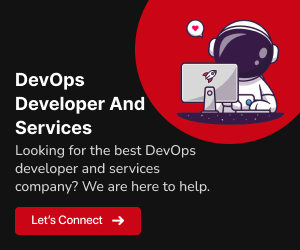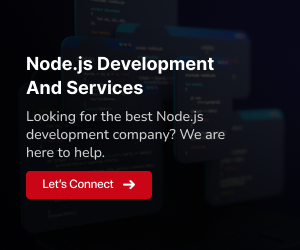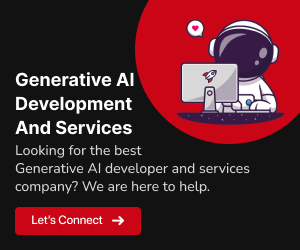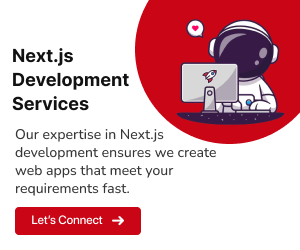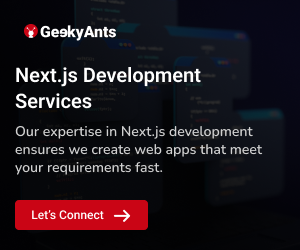In the fast-paced world of web development, staying on top of the latest technologies and best practices is essential. As we step into 2023-24, React.js continues to be a dominant force on the frontend, powering countless web applications with its flexibility and performance. But when it comes to choosing the right backend for your React project, the decision can be just as critical. In this blog, we’ll explore the best backend options for React in 2023-24, helping you make informed choices for your next web development endeavor.
React JS: A Quick Recap
Before we dive into the world of backends, let’s briefly recap what React.js is. React is an open-source JavaScript library developed by Facebook. It’s designed for building user interfaces that are both interactive and efficient. With React, you can create reusable UI components, manage application state, and efficiently update the DOM using a virtual representation. Its component-based architecture and vibrant ecosystem have made it a top choice for frontend development.
Advantages of React JS
React’s popularity isn’t just by chance; it offers a multitude of advantages.
Component Reusability:
React encourages the creation of reusable UI components. This modularity makes it easy to maintain, scale, and update your application.
Virtual DOM:
React’s virtual DOM ensures optimal performance by minimizing direct DOM manipulation. It updates only the parts of the actual DOM that have changed, resulting in faster rendering.
Strong Ecosystem:
React benefits from a vast ecosystem of libraries, tools, and community support. This ecosystem simplifies various aspects of development, such as routing (React Router) and state management (Redux).
Declarative Syntax:
React uses a declarative syntax, making it easier to understand and debug your code by abstracting low-level DOM manipulation details.
What is a Backend?
The backend of a web application is a crucial component responsible for handling a variety of essential tasks that are invisible to the end user but vital for the overall functionality and performance of the application. It serves as the engine that powers the frontend (the user interface) and ensures smooth interaction with the database where data is stored. Here are some key aspects of the backend’s role.
Data Storage and Retrieval:
One of the primary functions of the backend is to manage data storage and retrieval. It communicates with a database system, which can be a relational database (e.g., MySQL, PostgreSQL), a NoSQL database (e.g., MongoDB, Cassandra), or other data storage solutions. The backend is responsible for storing and organizing data, allowing users to create, read, update, and delete information securely.
Server-Side Logic:
The backend contains the server-side logic that powers the application’s core functionality. It processes incoming requests from the frontend, executes complex business logic, performs data validation, and ensures that the appropriate responses are sent back to the client. For instance, in an e-commerce application, the backend handles tasks like order processing, inventory management, and payment processing.
User Authentication and Authorization:
Security is paramount in web applications, and the backend plays a pivotal role in user authentication and authorization. It manages user accounts, verifies user credentials, and grants or denies access to certain parts of the application based on user roles and permissions. This ensures that sensitive data remains protected and that users can only access the features they are authorized to use.
API Creation:
In modern web development, building a robust and well-documented API (Application Programming Interface) is a common task for the backend. The API defines the rules and protocols for how the frontend and backend communicate with each other. It allows the frontend, built using technologies like React.js, to request data and services from the backend, enabling dynamic and interactive user experiences.
Why Backend for React.js?
React.js is a powerful library for building user interfaces, but it primarily focuses on the frontend aspect of web development. To create complete, functional web applications, a backend is essential. Here’s why a backend is crucial when using React.js.
Data Management:
React.js excels at rendering UI components and managing the user interface, but it doesn’t handle data storage or database interactions. A backend is needed to store, retrieve, and manipulate data, ensuring that your application has access to the necessary information.
Security:
Implementing user authentication, securing sensitive data, and managing access control are backend responsibilities. Without a backend, your application could be vulnerable to security threats.
Server-Side Logic:
Many applications require complex server-side logic, such as calculations, data processing, or integration with external services. The backend is where this logic is implemented.
API Integration:
React.js applications often communicate with external APIs to fetch data or perform actions. The backend serves as the intermediary between your React frontend and external APIs, handling requests and responses.
Related: 10 React Best Practices to Improve Your Code

Top Backends for React
In the world of React development, choosing the right backend is pivotal for building robust and feature-rich web applications. Here, we’ll explore some of the top backend options for React applications in 2023-24
1. Node.js with Express.js
Node.js is a runtime environment that allows you to execute JavaScript on the server side. When combined with Express.js, a minimal and flexible web application framework for Node.js, you get a potent backend stack.
Why Node.js with Express.js?
JavaScript Everywhere:
With Node.js, you can use JavaScript for both frontend and backend development, promoting code consistency.Non-blocking I/O:
Node.js is known for its non-blocking, event-driven architecture, which leads to high concurrency and efficient I/O operations.
Rich Ecosystem:
Node.js has a vast ecosystem of libraries and modules, making it suitable for a wide range of applications.
2. Ruby on Rails
Ruby on Rails, often referred to simply as Rails, is a web application framework written in Ruby. It follows the convention-over-configuration (CoC) and don’t repeat yourself (DRY) principles, which emphasize rapid development and maintainability.
Why Ruby on Rails?
Rapid Development:
Rails’ strong conventions and built-in tools speed up development, allowing you to focus on your application’s features.
Community and Libraries:
Ruby on Rails has a vibrant community and a wealth of gems (libraries) available, simplifying complex tasks.
Scalability:
While known for rapid development, Rails applications can be scaled effectively to handle increasing traffic.
3. Django
Django is a high-level web framework for Python that places a strong emphasis on code reusability and rapid development. It comes with an Object-Relational Mapping (ORM) system for database interactions.
Why Django?
Batteries Included:
Django provides a comprehensive set of features out of the box, including authentication, admin interface, and robust security.
Scalability:
Django applications can handle large amounts of traffic with proper optimization.
Pythonic:
If you are comfortable with Python, Django’s Pythonic syntax and design philosophy make it an attractive choice.
4. Firebase
Firebase, offered by Google, is a serverless backend platform that simplifies backend development. It provides real-time database capabilities, user authentication, and cloud functions.
Why Firebase?
Serverless:
Firebase abstracts server management, allowing developers to focus solely on building the frontend and defining business logic.
Real-time Database:
Firebase’s real-time database offers seamless synchronization between clients, making it suitable for collaborative and interactive apps.
Authentication:
Firebase provides robust authentication features, including social media logins, email/password authentication, and OAuth support.
5. ASP.NET Core
ASP.NET Core is a cross-platform, high-performance framework for building modern, cloud-based, and internet-connected applications. Developed by Microsoft, it’s a solid choice for building backend services for React applications.
Why ASP.NET Core?
Cross-Platform:
ASP.NET Core is cross-platform and can run on Windows, Linux, and macOS.
Performance:
It’s known for its high performance and scalability, making it suitable for enterprise-level applications.
Integrated Development Environment (IDE):
Visual Studio, Microsoft’s IDE, offers a robust development environment for ASP.NET Core.
6. Laravel
Laravel is a popular PHP web application framework known for its elegant syntax and developer-friendly features. It promotes clean, maintainable code and is suitable for a wide range of web applications.
Why Laravel?
Elegant Syntax:
Laravel’s expressive syntax and intuitive features make it enjoyable to work with.
Laracasts:
Laracasts, a popular resource, provides high-quality video tutorials and courses for mastering Laravel.
Community Support:
Laravel has a large and active community that continually contributes to its growth and improvement.
7. Spring Boot
Spring Boot is an open-source Java-based framework designed for building production-ready, stand-alone, and production-grade Spring-based applications.
Why Spring Boot?
Java Ecosystem:
If you are comfortable with Java, Spring Boot offers a comprehensive ecosystem for building backend services.
Dependency Injection:
Spring’s dependency injection capabilities simplify unit testing and code maintainability.
Microservices:
Spring Boot is well-suited for building microservices-based architectures.
8. Flask
Flask is a lightweight and micro web framework for Python. It’s minimalistic, allowing developers to choose their preferred libraries and tools, making it highly customizable.
Why Flask?
Lightweight:
Flask is minimal and doesn’t impose a rigid structure, giving you flexibility in designing your application.
Python Integration:
If you prefer Python for both frontend and backend development, Flask provides an elegant solution.
Extensible:
Flask’s modular design makes it easy to add features and libraries as needed.
9. Phoenix (Elixir)
Phoenix is a web framework for Elixir, a functional programming language known for its robust concurrency support. it is designed for building highly concurrent and real-time applications.
Why Phoenix?
Concurrency:
Elixir’s concurrency model allows Phoenix to handle a massive number of simultaneous connections efficiently.
Real-time Features:
Phoenix is excellent for building real-time applications like chat apps and online gaming platforms.
Scalability:
It’s designed to scale horizontally and handle high loads.
10. Spring (Java)
Spring, the framework that inspired Spring Boot, is a mature and widely adopted framework for Java-based backend development. It provides extensive support for building enterprise-grade applications.
Why Spring?
Enterprise-Ready:
Spring offers a range of modules for different concerns, such as Spring Security for authentication and authorization.
Java Ecosystem:
If you are invested in the Java ecosystem, Spring provides seamless integration with other Java libraries and tools.
Community and Resources:
Spring has a strong community and a wealth of documentation and resources.
Also Read: The Future of React JS : Top Trends & Predictions
Conclusion
As React.js continues to lead the way in frontend development, selecting the right backend is crucial for building powerful and scalable web applications. The choice ultimately depends on your project’s specific requirements, your team’s expertise, and your long-term goals. Node.js with Express.js, Ruby on Rails, Django, and Firebase are all strong contenders in 2023-24, offering various strengths to meet your backend needs. Choose wisely, and you’ll be well on your way to crafting exceptional web experiences.





















